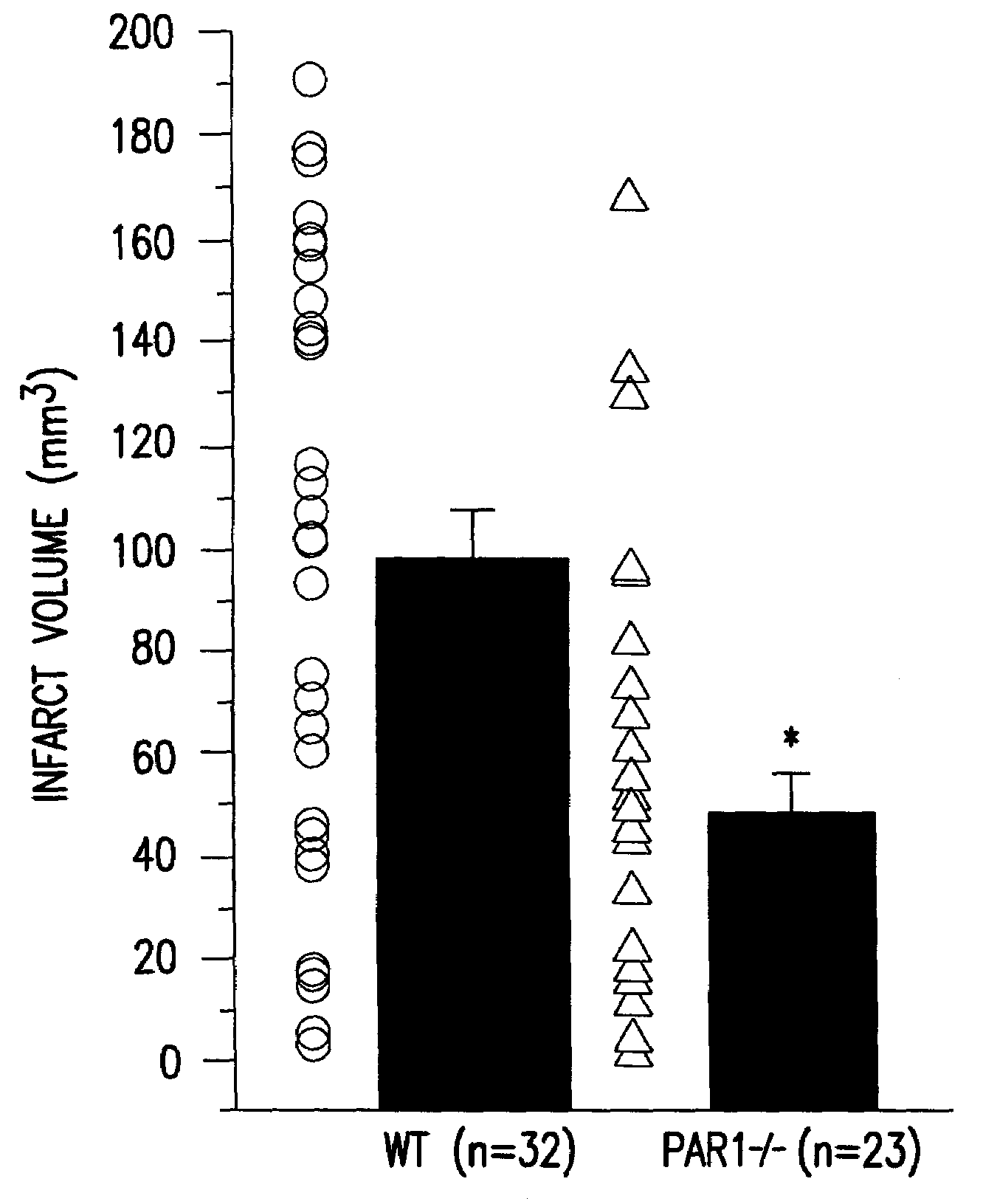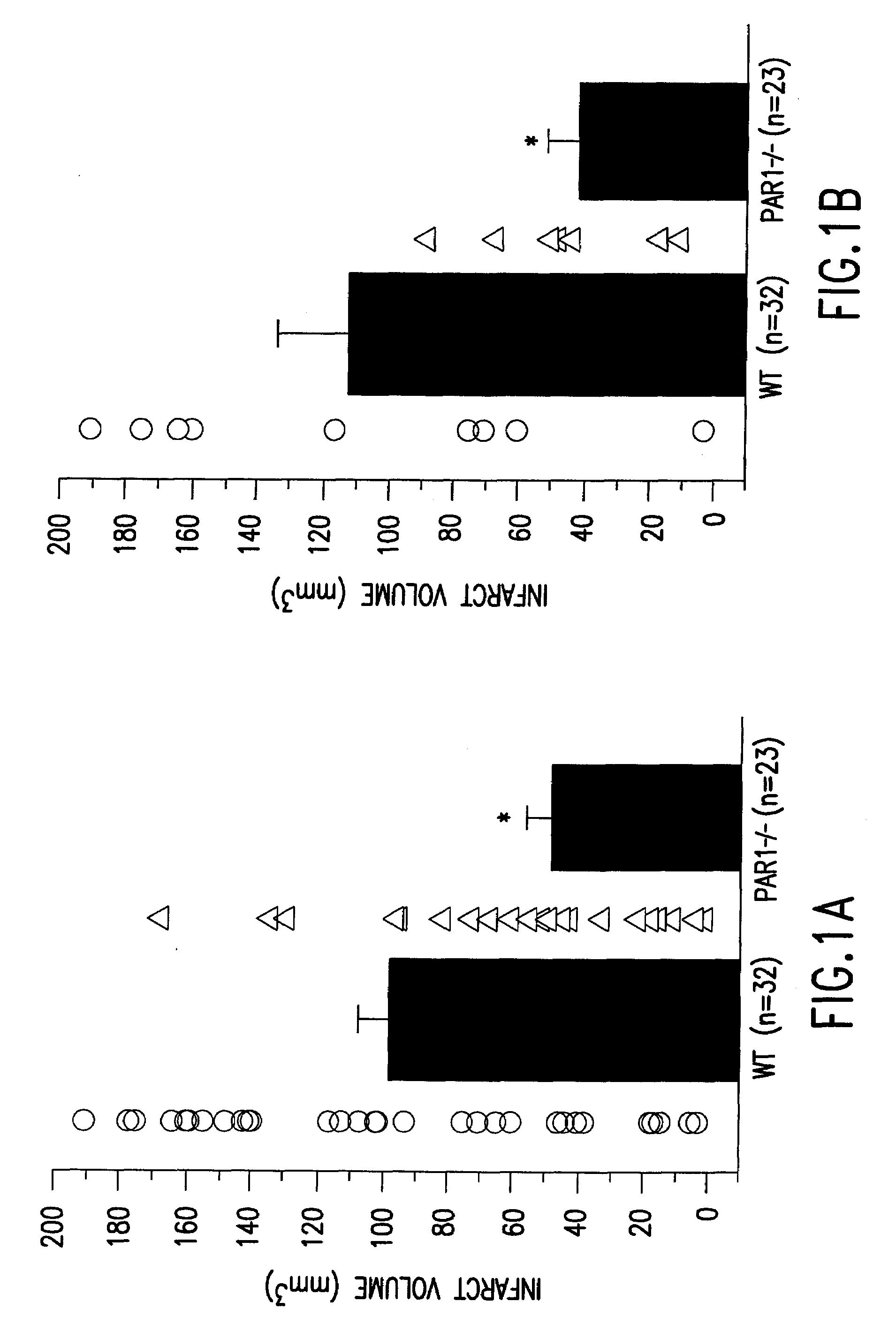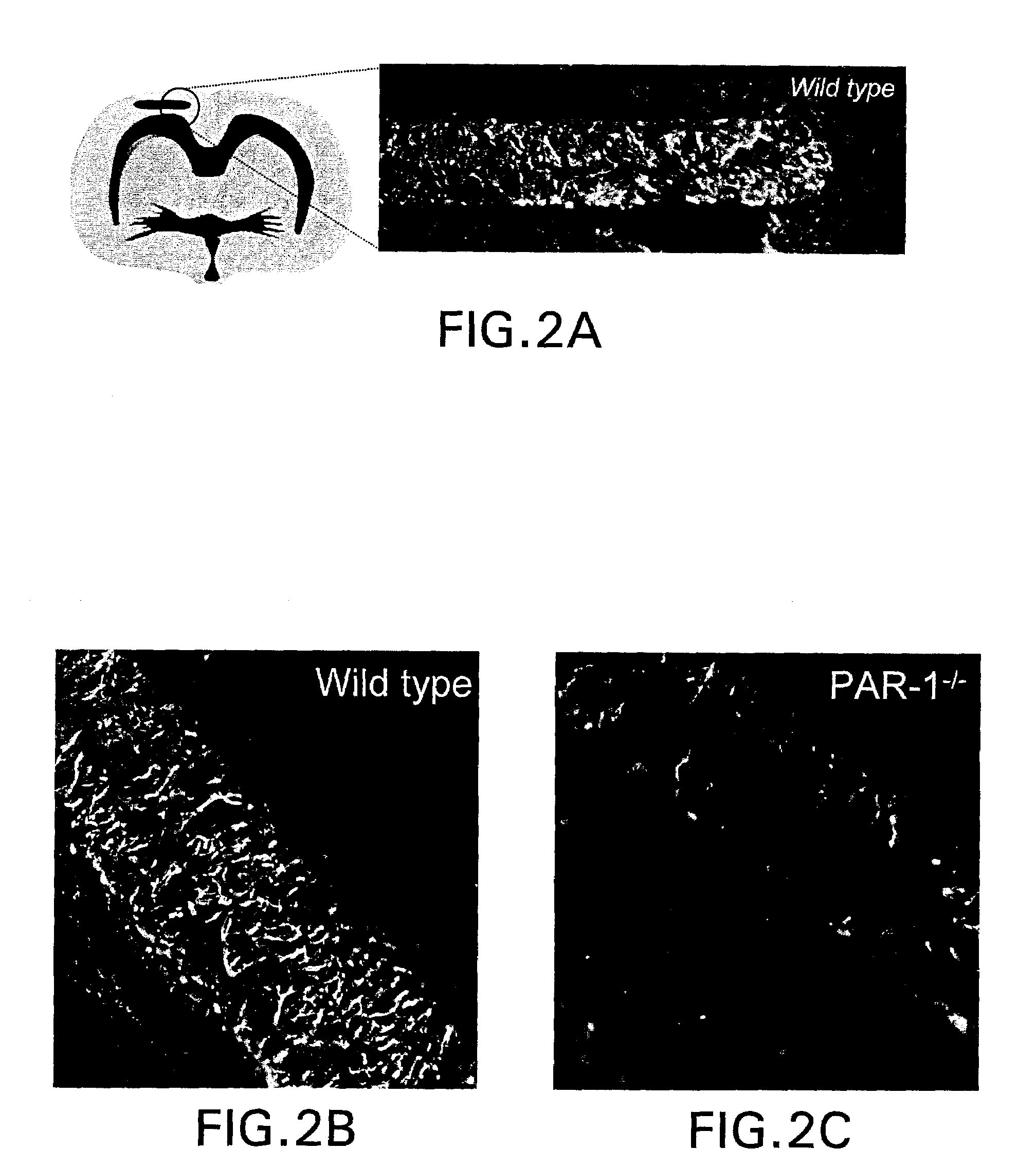Treatment of neurodegenerative diseases and conditions using par1 antagonists
a neurodegenerative disease and par1 antagonist technology, applied in the field of neurodegenerative diseases and conditions using par1 antagonists, can solve the problems of blood-brain barrier, undesirable consequences, glial scarring, seizures, etc., and achieve the effects of reducing the level of neuronal death, reducing the severity of neurodegenerative/neurotoxic effects, and reducing the level of par1/thrombin receptor activity
- Summary
- Abstract
- Description
- Claims
- Application Information
AI Technical Summary
Benefits of technology
Problems solved by technology
Method used
Image
Examples
examples
[0078]The present invention is more particularly described in the following examples, which are intended as illustrative only since numerous modifications and variations thereof will be apparent to those of ordinary skill in the art.
example i
PAR1 Mediates Neuronal Damage Caused by Transient Focal Ischemia
[0079]This example shows that mice lacking protease activated receptor-1 (PAR1) have over a 2-fold reduction in infarct volume following focal transient ischemia. These findings indicate that PAR1 is one of the mediators of the neuropathological effects of serine proteases such as thrombin, tissue plasminogen activator (tPA) and plasmin during ischemia, and therefore provides a new therapeutic target for situations in which the blood-brain barrier is compromised.
[0080]Recent findings have implicated the tPA / plasmin system as a component of the signaling cascade resulting in neuronal death in certain pathological situations. Potential harmful effects of tPA are also relevant for stroke patients who are administered tPA intravenously as a thrombolytic agent to facilitate reperfusion of ischemic tissue. Since PAR1 can be activated by serine proteases involved in the blood clotting system, such as plasmin and thrombin, we s...
example ii
PAR1 Stimulates Astrocyte Proliferation and is Necessary for Gliotic Scar Formation in the Central Nervous System
[0101]All central nervous system (CNS) injury induces both the migration of microglia to the site of injury as well as an increase in the number of glial-fibrillary acidic protein (GFAP)-expressing astrocytes. This reactive gliosis is a characteristic feature of glial scarring. Moreover, the gliotic scar has been considered to be an impediment to neuronal repair. Gliotic scars and biochemical changes in the extracellular environment produced by reactive astrocytes are thought to form a barrier that inhibits axon growth and neuronal repair, thus hindering the re-establishment of appropriate neuronal connections in the injured area. This barrier is hypothesized to be a cause of prolonged and often-incomplete recovery of function in affected regions; however, because there has been no known way to eliminate gliotic scar formation, this hypothesis has never been tested.
[0102]...
PUM
| Property | Measurement | Unit |
|---|---|---|
| rectal temperature | aaaaa | aaaaa |
| time | aaaaa | aaaaa |
| velocity | aaaaa | aaaaa |
Abstract
Description
Claims
Application Information
 Login to View More
Login to View More - R&D
- Intellectual Property
- Life Sciences
- Materials
- Tech Scout
- Unparalleled Data Quality
- Higher Quality Content
- 60% Fewer Hallucinations
Browse by: Latest US Patents, China's latest patents, Technical Efficacy Thesaurus, Application Domain, Technology Topic, Popular Technical Reports.
© 2025 PatSnap. All rights reserved.Legal|Privacy policy|Modern Slavery Act Transparency Statement|Sitemap|About US| Contact US: help@patsnap.com



